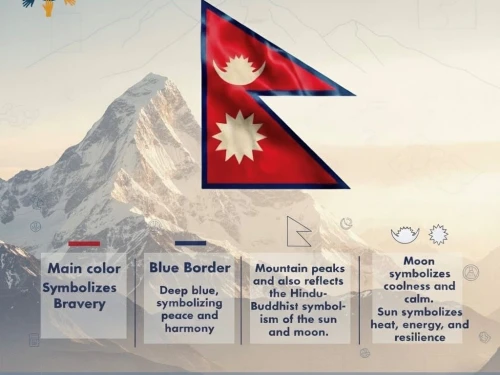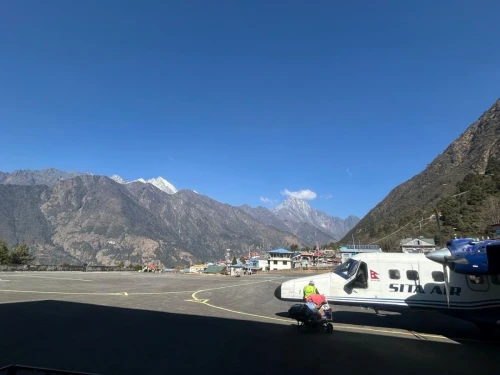What is the Annapurna Massif?
To put it simply, a massif is a compact collection of interconnected mountains that are frequently created by tectonic action and that clearly form a single, sizable unit. A massif, like the Annapurna Massif, is made up of several peaks and ridges that come together to form a cohesive geological structure, in contrast to other isolated peaks.
One of the most notable Himalayan massifs, the Annapurna, is situated between the Marshyangdi River to the east and the epic Kali Gandaki Gorge to the west. There are valleys, glaciers, ridges, and mountains along its roughly 55 km long and 30 km wide expanse.
Climate of the Annapurna Massif
The Annapurna climate is similar to that of the rest of Nepal's Himalayan region, with only minor variations. The best time to visit Annapurna is during the spring (March to May), when rhododendron forests bloom and the days are warm and clear. Similarly, autumn (October–November) is a much-liked season for Annapurna trekking due to its consistent weather, great peak views, and compatibility with holidays and festivals.
On the other hand, trekking is not advised during the Monsoon season (June to September) due to the heavy rainfall that makes the trails slick and susceptible to landslides. The winter months of December through February are another hazardous time of year for trekking. These months have cold temperatures, snow at higher elevations, and fewer tourists, making them perfect for trekkers who enjoy snowy adventures.
In the Annapurna region, snowfall primarily begins in late November and lasts through February, covering the higher peaks all year long. Because of the risk of high altitude, both trekkers and tourists should always be equipped with the necessary supplies. It is advised to always select knowledgeable travel partners, like Mount Glory Treks, who have years of experience in the difficult Annapurna Massif.
More details about the climate of the Annapurna Massif can be found in this clear table that displays temperature variations by altitude and season.
| Altitude | Spring | Moonson | Autumn | Winter |
| Valleys (1,000-2,500) | 15–25°C (day), 5–15°C (night) | 18–25°C (day), 12–18°C (night) | 15–25°C (day), 5–15°C (night) | 10–20°C (day), 0–10°C (night) |
| Mid Hills (2,000-3,500) | 10–20°C (day), 0–10°C (night) | 15–25°C (day), 5–15°C (night) | 10–20°C (day), 0–10°C (night) | 0–10°C (day), -5–0°C (night) |
| High Mountains (3500 m-5500 m) | 0–10°C (day), -5–0°C (night) | 5–12°C (day), -2–5°C (night) | 0–10°C (day), -5–0°C (night) | -10–0°C (day), -20–-10°C (night) |
| Peaks (5500 m+) | -5–5°C (day), -15–-5°C (night) | -2–5°C (day), -10–0°C (night) | -5–5°C (day), -15–-5°C (night) | -20–-10°C (day), -30–-20°C (night) |
Flora and Fauna of the Annapurna Massif
Along with the breathtaking mountain vistas and strenuous trekking, the Annapurna wildlife is another factor that contributes to this region's epic status. With endangered species and conservation initiatives, Annapurna is teeming with unique biodiversity.
During your visit, you can observe a diverse range of plants and animals in the Annapurna Massif, which spans an elevation range of 1,000 to 8,000 metres or more. In addition, Annapurna's ecosystems include snow-capped peaks, alpine meadows, and subtropical forests in the valleys.
Along with oaks, pines, and bamboo trees, the trails are lined with rhododendron forests, which contribute vivid colour. Mosses, lichens, and hardy shrubs that are acclimated to the cold, thin air are found in the alpine zones as you ascend.
The Annapurna Region also has endangered animals such as the snow leopard, red panda, Himalayan tahr, musk deer, and Himalayan monal (Nepal's national bird). Additionally, the Annapurna Conservation Area promotes ecotourism while putting a lot of effort into protecting wildlife and endangered species.
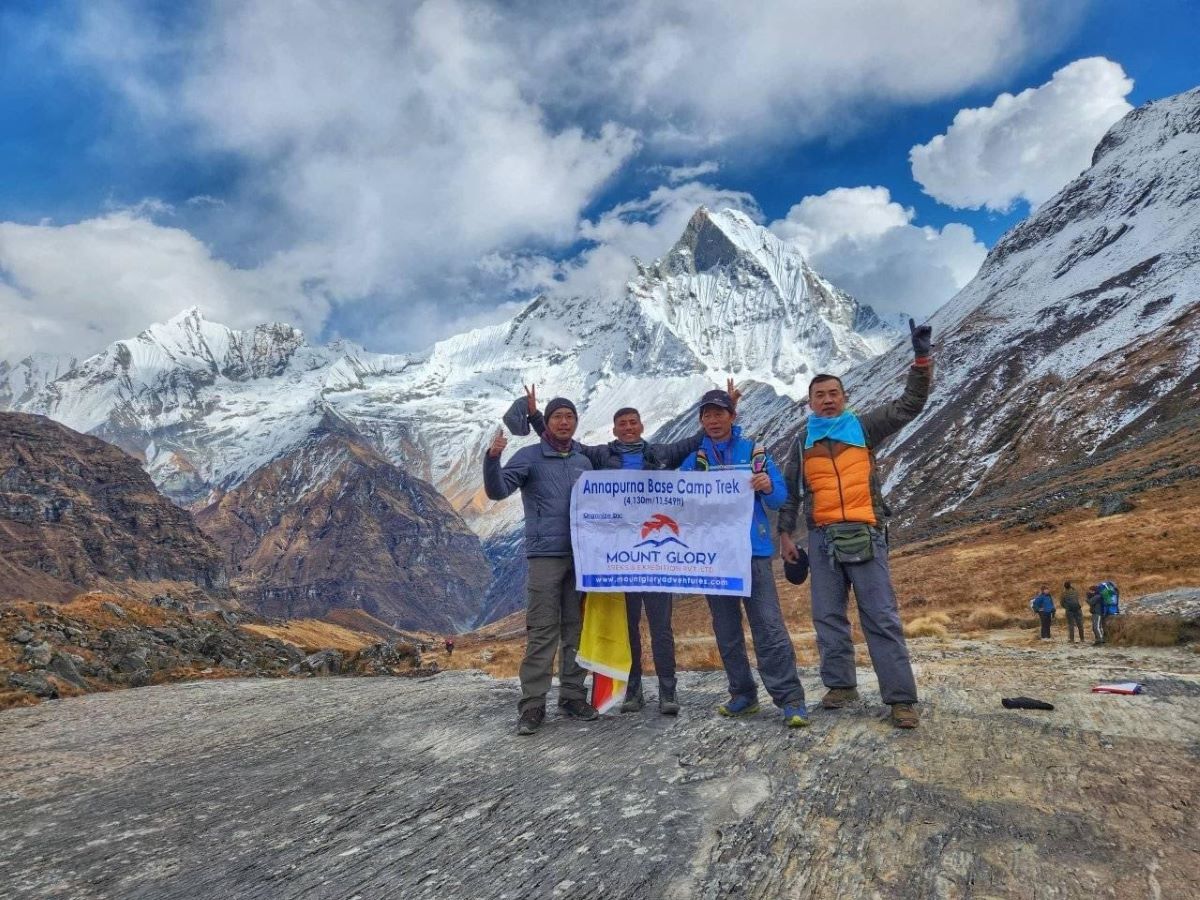
Culture and Lifestyle in the Annapurna Himalayan Region
Before learning more about the Annapurna range's trekking routes and destinations, we should first learn about the local culture and lifestyle. The Annapurna Region is home to diverse ethnic groups such as Gurung, Magar and Thakali.
For centuries, these communities have resided in the high Himalayas, preserving their distinct customs, languages, and ways of life while always extending a warm welcome to guests. Additionally, agriculture, animal husbandry, and primarily tourism related to trekking are the main sources of income for the local population.
Out of respect, the local communities, who consider the mountains to be sacred, have even refrained from climbing Machapuchhre. Both the Gurung and the Magar view mountains as living deities, as do the Hindu and Buddhist communities.
Dashain and Tihar are two important festivals observed in the Annapurna Massif, with various rites and homages to the natural world and ancestors. The harvest, mountain deities, and the start of the monsoon are frequently celebrated during the unique seasonal festivals. If you're lucky, you might be able to see the customary festivals that feature storytelling, dance, and music rooted in mountain folklore.
Major Peaks in the Annapurna Massif
The Annapurna Massif features some of the world’s most iconic peaks, including Annapurna I (8,091m), Annapurna II, III, and IV, Gangapurna, and Machhapuchhre (Fishtail). Located in north-central Nepal, this Himalayan range offers breathtaking scenery, challenging trekking routes, and remarkable mountaineering experiences for adventurers exploring the Annapurna region.
| S.N. | Mountain Name | Height in meters | Height in Feet | Major Highlights |
| 1 | Annapurna I | 8,091 m | 26,545 ft | The tenth-highest mountain in the world, yet among the most dangerous peaks to climb. |
| 2 | Annapurna II | 7,937 m | 26,040 ft | The 2nd-highest mountain in the range stands proudly at the eastern end. |
| 3 | Annapurna III | 7,555 m | 24,787 ft | Majestic, snow-clad peak guarding the gateway to Annapurna Sanctuary. |
| 4 | Annapurna IV | 7,525 m | 24,688 ft | A striking peak with sharp spires and shining glaciers piercing the sky. |
| 5 | Mount Gangapurna | 7,455 m | 24,459 ft | Pyramid Peak is, stunning companion on the Annapurna Base Camp trail. |
| 6 | Annapurna South | 7,219 m | 23,684 ft | This peak stands tall, guarding the Annapurna Sanctuary. |
| 7 | Mount Machhapuchre | 6,993 m | 22,943 ft | The sacred “Fishtail Mountain.”
Beautiful, majestic, and forever unclimbed. |
| 8 | Hiunchuli | 6,441 m | 21,132 ft | Think of this peak as the guard at the Sanctuary gate, near Annapurna South. |
Popular Treks in the Annapurna Himalayan Range
There are numerous destinations in the Annapurna Massif, each with its own set of difficulties, expenses, and experiences. Also, your decision, level of fitness, and duration of stay will determine how long you spend trekking to Annapurna. For this reason, we have included a variety of our best-selling Annapurna Trek Packages, and we are confident that you will enjoy one or perhaps all of them.
Annapurna Base Camp Trek
You will reach the base of Annapurna I (8,091 m), the tenth-tallest mountain in the world, on this traditional Himalayan adventure. This seven-day moderate trek combines traditional Gurung villages, verdant forests, and breathtaking 360-degree mountain views. You can check out the package to find out all the details about the trek, including its cost and itinerary.
Ghorepani Poon Hill Trek
One of Nepal's most well-known sunrise views over the Annapurna and Dhaulagiri ranges can be found on the short and picturesque Poon Hill Trek, which is perfect for novice hikers. Ideal for tourists with limited time who want to experience the Himalayas quickly.
ABC Trek with Helicopter Return
This is an upscale version of the Annapurna Base Camp trek known as the ABC Trek With Helicopter Return, where you will hike through breathtaking valleys and then take in the Annapurna Massif from above as you return by helicopter. Ideal for people who prefer comfortable adventure and don't want to take the same path twice.
Annapurna Circuit Trek
The Annapurna range is encircled by the Annapurna Circuit Trek, which is one of the most varied trekking routes in the world. Explore ethnic villages, traverse the breathtaking Thorong La Pass (5,416 m), and take in the constantly shifting scenery from alpine deserts to subtropical forests.
Mardi Himal Trek
A hidden gem in the Annapurna, the Mardi Himal Trek provides breathtaking up-close views of the Annapurna and Machapuchhre Peaks. For those looking for a quiet trail, colourful rhododendron forests, and genuine local culture away from the crowds, this quick 5-day trek from Pokhara is ideal.
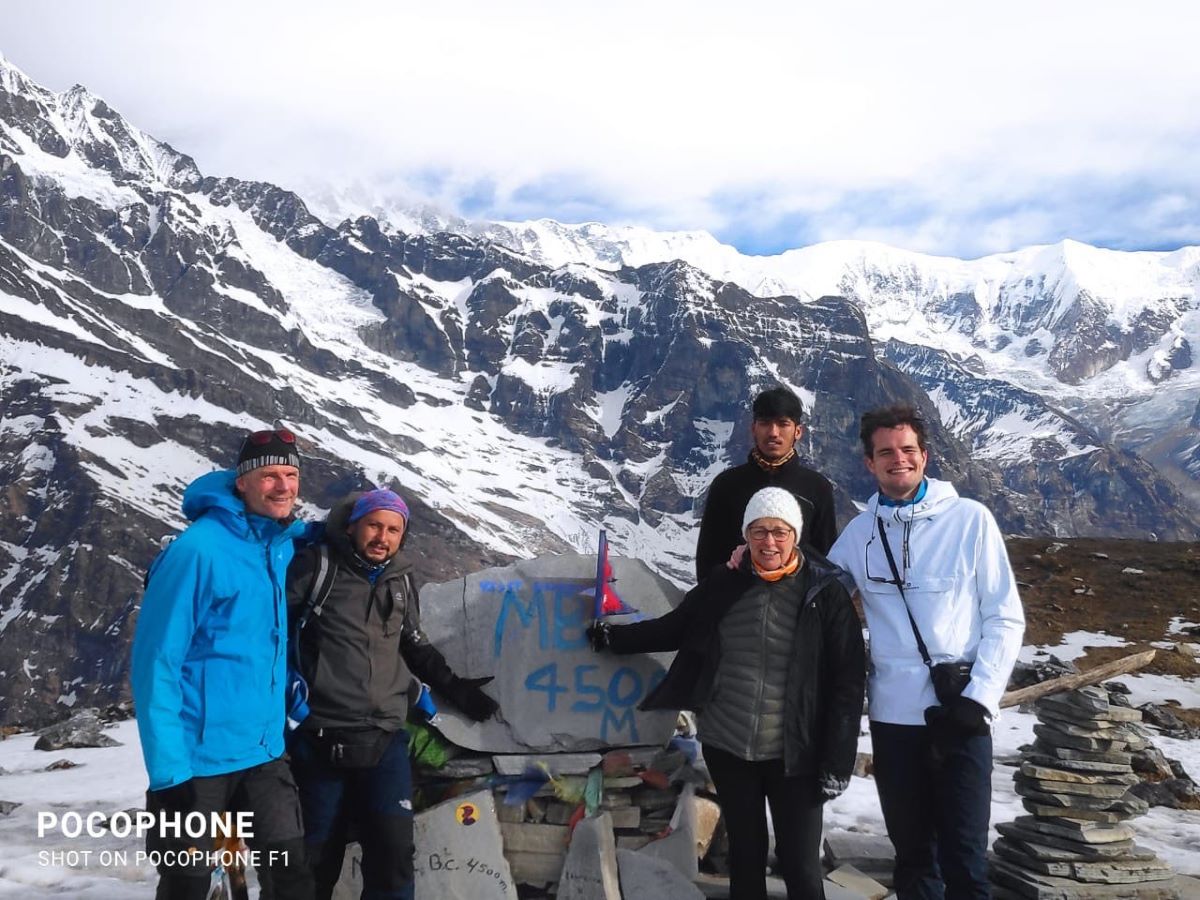
Choose Mount Glory Treks
Interested in the packages from the Annapurna Massif? Do not hesitate any longer and book your trip with us immediately; we also offer a number of additional Annapurna Trekking options.
You will enjoy professionally led hikes, safe adventures, and customised itineraries that cater to all skill levels. We will also make adjustments based on your preferences, thanks to our team of knowledgeable staff members.
Come along with us today for a journey through the famous Annapurna landscapes that will never be forgotten.
In Conclusion
With its combination of tall snow-capped peaks, varied ecosystems, rich cultural heritage, and unusual adventure, the Annapurna Massif is one of Nepal's most magnificent natural wonders.
Additionally, it is strongly advised that travellers adopt sustainable trekking methods by honouring local customs, reducing plastic waste, and contributing to conservation efforts. In order to preserve the delicate Himalayan ecosystem of the Annapurna Massif, the Annapurna Conservation Area Project (ACAP) is essential.
As previously stated, there are many stunning trekking destinations in Annapurna, and a variety of packages are available. An experience that will last a lifetime is provided by the Annapurna Massif Trek, whether it is trekking through rhododendron forests, flying over snow-capped towering peaks, crossing the Kali Gandaki river, or having tea with Gurung villagers.
Frequently Asked Questions
1: Where exactly is the Annapurna Massif located in Nepal?
Situated in the Gandaki Province of north-central Nepal, the Annapurna Massif spans the Annapurna Conservation Area.
2: What is the number of peaks in the Annapurna Massif?
With one peak at 8,000 metres (Annapurna I) and more than 13 peaks above 7,000 metres, the massif consists of more than 55 peaks above 6,000 metres.
3: What makes Annapurna I one of the most hazardous mountains to ascend?
Because of its steep slopes, erratic weather patterns, and high avalanche risk, it has one of the highest death rates among 8,000-metre peaks worldwide.
4: What sets the Annapurna Base Camp trek apart from the Annapurna Circuit?
For up-close views of the peaks, the Base Camp trek takes you straight to the base of Annapurna I, while the Circuit is a lengthy route that circles the massif.
5: For trekking in the Annapurna region, what permits are needed?
A TIMS card and an ACAP (Annapurna Conservation Area Permit) are required for trekkers. (Trekkers’ Information Management System).6:
6: What time of year is ideal for trekking around the Annapurna Massif?
Due to their stable weather and clear skies, spring (March–May) and autumn (October–November) are the ideal seasons for trekking.
7: How challenging is the trek around the Annapurna Circuit?
It's a moderate-to-difficult trek that requires strong physical condition to traverse high passes like Thorong La (5,416 m) and travel long distances every day.
8: What kinds of animals inhabit the Annapurna Massif?
The area is home to musk deer, snow leopards, red pandas, Himalayan tahr, and many bird species, including the Himalayan monal.
9: Is it possible to climb Machapuchare (Fishtail Mountain)?
No, in respect for local spiritual beliefs, Machapuchare is still officially unclimbed and is regarded as sacred.
10: Which major rivers emerge from the Annapurna range?
The glaciers and valleys surrounding the Annapurna Massif are the source of the Kali Gandaki, Seti, and Marshyangdi rivers.
11: How long does the Annapurna Base Camp trek take?
Typically, the ABC trek takes about 7–12 days depending on the chosen route, fitness level, and acclimatisation days.
12: Does the Annapurna region offer trekking for novices?
Yes, beginner treks with a moderate level of fitness are ideal for routes like Poon Hill and the Annapurna Sanctuary Trek.
13: Does the Annapurna region experience snowfall in October?
Higher elevations may experience light snowfall, but October typically brings clear skies and comfortable trekking conditions.
14: What is special about the Annapurna Conservation Area?
It is the biggest protected area in Nepal and is home to historic villages, a variety of ecosystems, and eco-friendly community-based tourism initiatives.
15:What is the average temperature at Annapurna Base Camp?
During trekking seasons, nighttime temperatures can drop to -10°C, and in the winter, they can drop much lower.
16: Are there any helicopter tours offered in the Annapurna area?
Yes, luxury or short-term travellers can enjoy aerial views of the Annapurna peaks with well-known options like the ABC Helicopter Return.
17: What is the elevation of the Annapurna Circuit's Thorong La Pass?
At 5,416 metres, the Thorong La Pass is among the world's highest trekking passes.
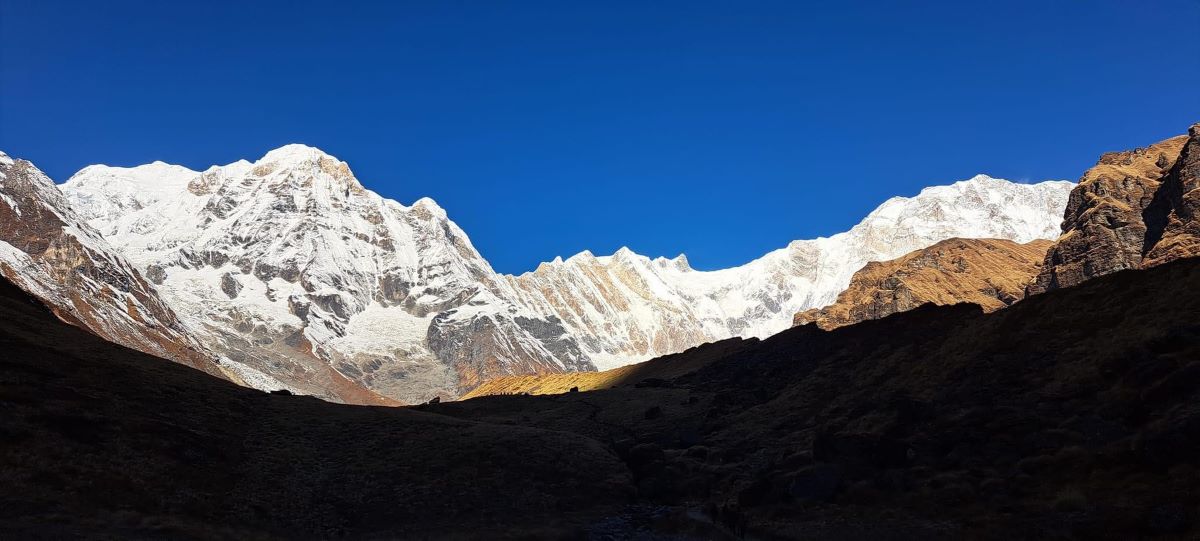

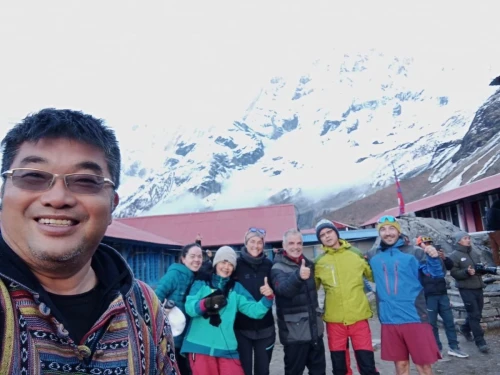

 24 reviews
24 reviews




